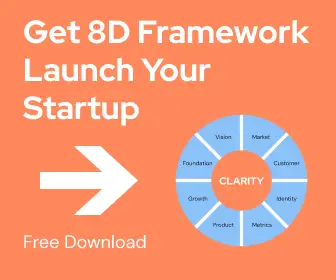Actionable Email Marketing Tips for Maximum Engagement
If you’re not in the email marketing world yet, get ready to have your mind blown.
Most marketing emails just look like an ad and are completely uninteresting. They can’t make you read for more than ten seconds, let alone make you chuckle and enjoy them.
Good emails are actually fun to read, they’re not just dull ads.
With email marketing, your goal should be to build a relationship with the reader… To be a name the reader recognizes, remembers, and talks about with other people.
When you form a relationship, they will look forward to seeing your name in your inbox and they WILL click the links you put in your emails.
How do you build a relationship over email? By entertaining your readers and genuinely helping them better themselves 🙂.
How to Make Sales With Email – Make Them More Entertaining Than Netflix

We already established this – good emails DON’T look like ads. You can just go to your inbox and find a ton of emails like these (which you probably completely ignored):
“Thanks for signing up…We’re this, we’re that… We, we we… Here’s 20% off your next purchase for no reason at all. Thank you for reading!”
Whenever you advertise, you have to remember that people are interested in themselves, not in you.
- How can you help them solve their problems?
- How can you help them move toward their dream outcome?
- Can you entertain them?
These are generally the three things you should be doing in your emails.
For entertainment – I’m talking stories, characters, emotions, exaggeration, anecdotes, lessons…
These hook the readers, making your emails something they WANT to read. Think about it, if your audience loves reading your emails, they will willingly be sold by you.
Here’s an example of good email entertainment:
Source: https://zapier.com/blog/story-based-email-marketing/
Once you hook your readers and entertain them, it’s easy to segue into your product and provide a link to buy it.
I haven’t read the whole email, but for example – let’s say Emilia sells wine. After the story, she could have just said the wine was the best she’d ever had. She could have talked about how great it tasted and how special it made her feel. Then, she could have shared a link to buy it.
If you just shift your mindset from advertising to entertaining, you will make huge progress in your email marketing game.
If You Don’t Always Want To Use Stories: Enter The PAS Framework
Although using a story is amazing to start a marketing email, it’s not the only way. Another framework you can use is PAS: Problem-Agitate-Solution.
In this model, you start talking about a problem that your audience relates to. Then, you explain the problem more and put some salt on the wound (agitate), and in the end, you give your solution to the problem (your product).
Let me give you a weight loss example so you can understand PAS a bit better:
- Problem: People often feel like they have to eat boring and untasty food to lose weight
- Agitate: This makes them quit every time they try to lose weight. They’re on their best behavior for a couple of days but they quickly get bored of rice and broccoli. This makes them feel like a failure, which makes them eat more and gain more weight.
- Solution: Weight loss can be easy and fun with the right recipes. Did you know you could actually look forward to your next meal while on a diet? In my recipe book, I have 147 recipes so you can choose the 10 that you like most and eat them every day… You see where this is going.
This way, people will feel like you truly understand their pains and frustrations. It’s like going to a doctor – you’re happy when the doc knows exactly what’s wrong. If people see what you understand, they will trust you have the right solution for them.
Free value: What is it and how much of it should you give in emails
Free value is something of value you give people for free. Amazing explanation, I know.
By free value, people mostly think advice, actionable steps, valuable knowledge, etc. It’s used to get people to like you and trust you. At the end of the day, if you learn and get useful things from someone, they must be an expert, right? If they’re an expert, you’re more likely to buy, right?
Yes and no.
Yes, you have to position yourself as an expert, but no – not by giving away tons of advice and traditional free value.
People mostly don’t value the info they don’t pay for. Save that for your paid courses, where people will actually listen and apply what you share. Don’t try to hard-teach your audience, thinking they will “respect” you more – it often backfires and makes you boring.
Another form of free value that works way better is… Drum roll… Entertainment! Have I mentioned that already?
People seek entertainment all the time and handing it to them is much more valuable than giving away the “traditional” free value. Share things about yourself and some stories you heard, give your opinions and your expertise and link your products.
Remember, the goal is to make people excited to read your sales emails!
The WHAT??? Factor: How to Build Irresistible Subject Lines
If you want people to open your emails, your subject lines need to be shocking 😱. “10% off your next purchase!” just doesn’t cut it anymore.
Here are some subject lines I’ve seen from amazing email marketers. Notice how all of them make you think “Hm? How…?”:
- How to build your business with a tennis ball
- The hidden fat-burning thermostat in your body
- I got in a fight last night…
- Is this chocolatey snack really a superfood?
Obviously, the subject lines need to be relevant to the text, but don’t be afraid to be a little wild. People love seeing a good subject line pop up on their screen.
Tracking Metrics: This is How Important It Is to Obsess Over Them…
… Not really. Some people swear by a specific open rate and click-through rate to aim for, but I don’t suggest you listen to them.
Metrics change all the time, depending on the context. The longer people get emails from you and the more they like you, the more they will open your emails and click your links.
To illustrate this better, let’s take a look at open rates. “Open rate” is the percentage of people that opened your emails. When your significant other sends you a message, you (probably) open it because of the name that pops up on your screen, not because of the content of the message. It’s similar with emails – while a good subject line helps your open rate a lot, your connection to the readers is also important.
Focus on improving the relationship with your readers, entertaining them, and selling them valuable products. If you do that right, the metrics will improve more and more.
Segmenting Your Audience: Send the Right Message to the Right People
Let’s say you sell different training programs – one for young women and one for older men. Does it make sense to send the young women emails like: “This is how losing 20 kilos helped Chris satisfy his wife again”? That probably won’t make them buy.
Segmenting means splitting up your email list into smaller groups based on things like interests or behaviors so you can send more relevant messages.
You can have all kinds of segments that make sense for your business – age, gender, how often people read your emails, what products they already bought…
There are really no set rules about segmenting. Some people send every email to their whole audience and some people send some launch emails only to specific groups.
Building an Email List That Doesn’t Suck (Because Size Isn’t Everything…Or Is It?)
I know you’re excited to share your stories, make people laugh, and sell them everything you have, but wait a second.
You still need to build an email list. By building a list, I mean collecting people’s emails. You can’t just find people’s email addresses, note them down, and start blasting them though. They need to consciously give you their email address and agree to receive emails. Make sure to respect the law while doing this:
- General Data Protection Regulation (GDPR): If your readers are in Europe you are required to obtain explicit consent from users before collecting and using their personal data (including email addresses). This often means you need to include a clear and affirmative opt-in checkbox.
- California Consumer Privacy Act (CCPA): If your readers are in California, it’s enough to state that by submitting their email, they agree to receive communications. There’s no need for a checkbox
- Canada’s Anti-Spam Legislation (CASL): If your readers are in Canada, you also need to provide a checkbox.
Now that we got the boring legal stuff out of the way… You need to give people a REASON to give you their emails. Here’s how you can do that:
- Lead Magnet/Freebie: You give them a pdf, a video, or something similar of value in exchange for their emails. You typically don’t want this to be a huge thing you spend countless hours on. No one wants to fill out a novel just to get a PDF.
- Pop-up forms: You know that annoying pop-up you get when you land on certain pages? Well, it can work quite well – if you give a promise in the pop-up that makes the reader think: “Cool, I want this, I forgive you for interrupting me”. You have to deliver on the promise, though.
- Gated Content: For this one, you’ll have to subscribe to my email list 🙂. It’s the most powerful email list-building tactic I know and it brings me hundreds of loyal subscribers every month. As soon as you see it, your mind will be blown, instantly turning you into my loyal email minions… In case the joke flew over your head, “gated content” is content people have to subscribe to get.
Takeaways
There are a lot of actionable tips to master the art of email marketing, but I only wanted to give you the must-know info to write great emails. Here are the takeaways:
- Do your emails look like ads? (Good emails are actually fun to read, they’re not just dull ads)
- Are you telling stories in your emails? (Stories are great to hook your reader and build a relationship with the reader. It makes them love reading your sales emails)
- Are you using the PAS framework? (Problem-Agitate-Solution. It makes people see you understand their pains and frustrations)
- Should you give free value in emails? (Don’t hard teach, please… Your readers won’t care unless they pay for the info. Rather entertain them and make them imagine what their life will look like after buying your product)
- Are you writing WHAT???-based subject lines? (Make people truly curious when seeing your subject lines)
- How important are metrics? (Make sure you see improvement over time, don’t obsess on some “set in stone” numbers. As your relationship with the readers improves, the numbers will too)
- Are you targeting the right people with your message? (Segment your audience according to what you want each type of person to read)
- Is there a reason someone should give you their email (give them something of value when requesting their email address)
- Are you following the law? (GDPR for Europe, CCPA for the US, CASL for Canada)
Email marketing is an amazing way to sell your products.








